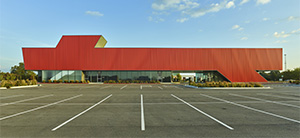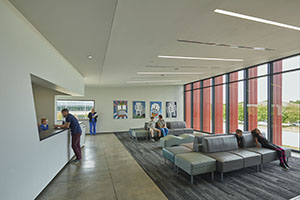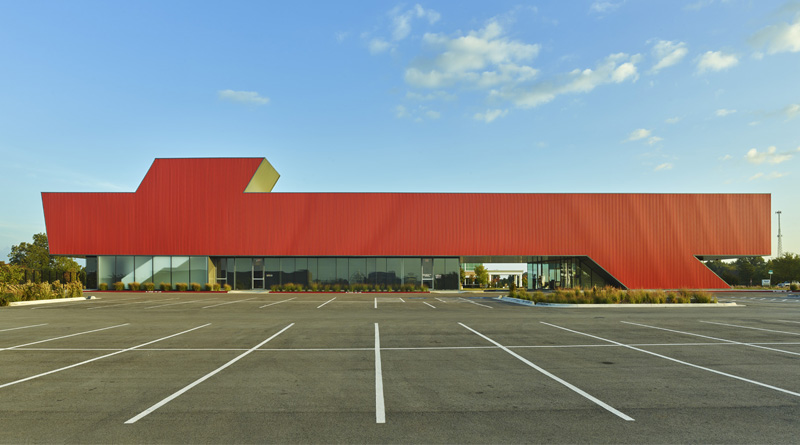Harvey Pediatric Center Wins AIA Healthcare Award
By Rachel Leber
ROGERS, Ark. — The American Institute of Architects (AIA) and the Academy of Architecture for Health (AAH) selected seven recipients for the 2017 AIA/AAH Healthcare Design Awards this year in multiple categories. The award program showcases the best health care building design and health care design-oriented research while meeting requisite functional and sustainability concerns of a hospital. The Harvey Pediatric Clinic in Rogers won the AIA Healthcare award under the category of “less than $25 million” in construction cost. It had a final budget of just under $3 million, while still accomplishing many design features that will improve patient care and healing.

Marlon Blackwell Architects in Fayetteville, Ariz., was the architect on the project, with SSi Inc. in Springdale, Ark., as the general contractor. The construction of the 15,493-square-foot building began in May 2015 and was completed in May 2016. The new clinic has 16 exam rooms, four private doctor’s offices and two nurse stations in the center of the facility. The exam rooms are organized along a loop corridor creating a simple path from the waiting room to the exam room to improve patient wayfinding and overall experience. There are skylights over the two nurses’ stations, which bring abundant natural light into the main space of the facility.
The building is striking from the outside, with bold cayenne metal panels — a custom color that was developed specifically for the project — that wrap the entire south elevation of the building, according to Justin Hershberger, AIA, project architect at Marlon Blackwell. The bright color and unique form provides a strong visual identity for the clinic along South 52nd Street, where medical office buildings are becoming more and more prevalent. Additionally, a standard, weathered zinc metal panel is used on the north side of the building, which offers texture on the other side of the building, with a flat metal panel profile used on the west elevation and soffit.
From the inside, patients enjoy a well-lit lobby with a skylight that extends along the length of the building. A portal at the ground floor creates the waiting area for patients under the elevated cayenne form, and is also where patients enter the building. The stairway that leads patients into the office is enshrouded in blue light from the blue glass in the skylight above. This color was chosen with the intention of “the suggestion of healing,” in addition to the lobby skylight that extends into the exam rooms, which offer the best views in Rogers, according to Hershberger.

Photo Credit (all): Timothy Hursley
The space was deliberately set up in such a way as to keep staff on one side and patients on the other — including separate entrances and exits — in order to prevent “awkward overlap,” according to Hershberger. As such, the building works really well on an operational level for the staff . “When the staff need to get supplies, the patients are not bothered by the going-ons of the staff,” he said.
When staffers who were used to a more traditional office setting first moved into the new office, there was a transitional period when they felt that there was “too much light,” according to Hershberger. That, however, changed after a short period of adjustment, with the staff even sharing how amazing the space is for healing, according to Hershberger.
“Winning the AIA Award for this project felt great because it speaks to what you can do with modest means,” said Hershberger. “The thing that makes us really happy is this [project] proves that architecture isn’t just for the wealthiest client or medical practice. Instead, it is about the notion that great spaces can help in the healing and well-being of people.”

